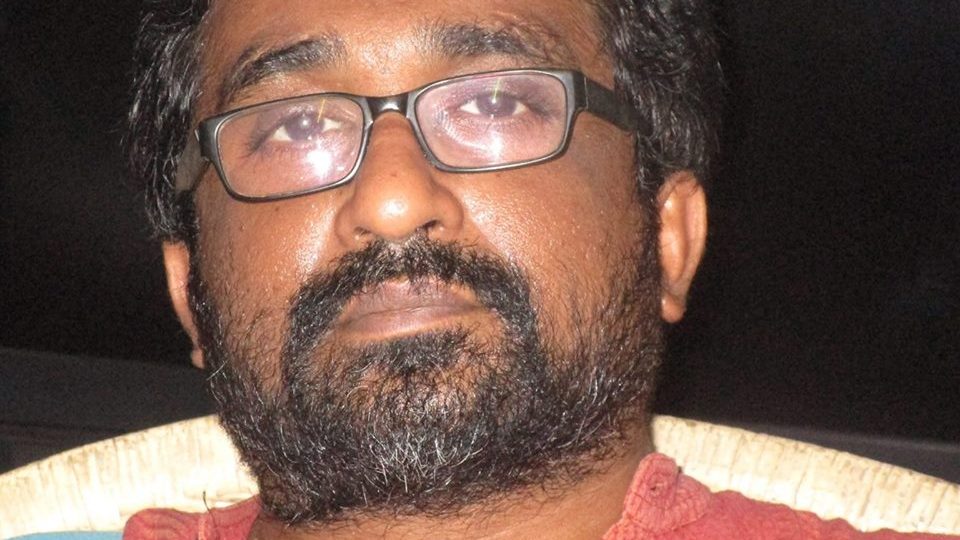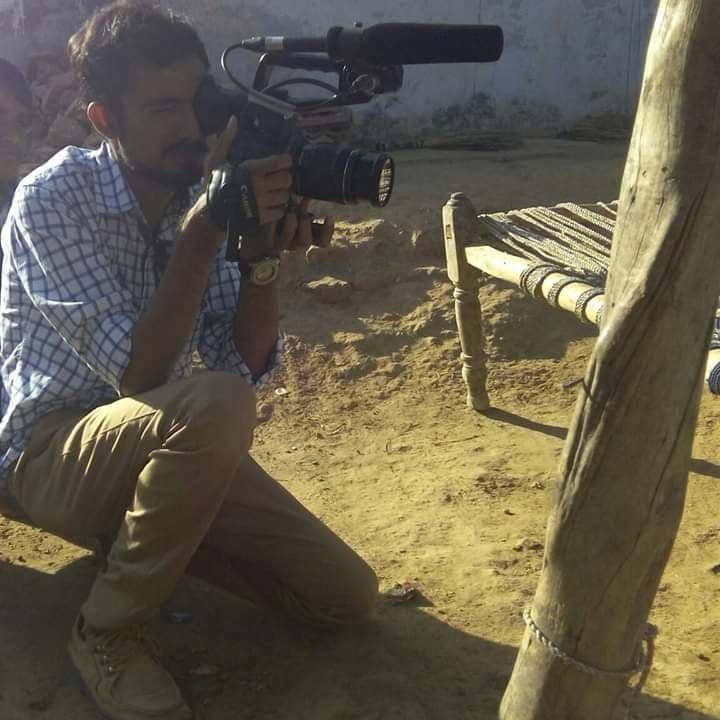Bobby Kunhu
 Despite the extensive work by historians like K. N. Panikkar, the general consensus that the 1921 Malabar rebellion was a peasant rebellion and the fact that the Government of Kerala awards pension to those who participated in the rebellion and their spouses – there are strong attempts to portray the events of 1921 as communal violence. This also has to do with how the contemporary non Malayalee North Indian leaders of the Independence movement reacted to the events without even a primary investigation. While there were Hindu – even savarnas – who sided with the rebels, the feudal savarnas – who never were part of the independence movement – nor claimed any loyalty to the idea of India were the ones that were desperate to portray 1921 as a communal frenzy. The letters written by people like the Samoothiri and the Rani of Nilambur whose feudal caste antecedents are well established is proof enough. The rare non-Malayalee who diagnosed 1921 correctly was Saumyendranath Tagore.
Despite the extensive work by historians like K. N. Panikkar, the general consensus that the 1921 Malabar rebellion was a peasant rebellion and the fact that the Government of Kerala awards pension to those who participated in the rebellion and their spouses – there are strong attempts to portray the events of 1921 as communal violence. This also has to do with how the contemporary non Malayalee North Indian leaders of the Independence movement reacted to the events without even a primary investigation. While there were Hindu – even savarnas – who sided with the rebels, the feudal savarnas – who never were part of the independence movement – nor claimed any loyalty to the idea of India were the ones that were desperate to portray 1921 as a communal frenzy. The letters written by people like the Samoothiri and the Rani of Nilambur whose feudal caste antecedents are well established is proof enough. The rare non-Malayalee who diagnosed 1921 correctly was Saumyendranath Tagore.
The thrust of this essay wouldn’t be 1921 per se, but an analysis of the evolution of the Mappila community and it’s idea of nationhood and identity. This exercise would, hopefully help us to understand the underpinnings of the 1921 revolt. For this we need to start right from the very beginning. And the very beginning for this purpose would be the etymology of the term Mappila itself. Mappila means son-in-law. The sailors in the ships that traded from the medieval port of Musiris(Kodungallur) married locally and their descendants collectively were denoted as Mappilas. Around Musiris, there were three kinds of Mappilas that were in vogue – the Mappila Nasrani – being Christian, Mappila Judar – being Jewish and Mappila Jonaka – being Muslim. As against the popular mythology, particularly amongst Syrian Christians that St. Thomas came and converted five Brahmins – conversions were organically through marriage and the socio economic station of those who embraced these religions was determined by the station of those who married and whom they married. For instance, the Thangals married savarna women and continue their posture of social superiority within the Mappila community. Meanwhile, a vast majority of the sailors married women from lower castes and their progenies remained peasants or petty traders till the first wave of migration to Malaysia and later the Gulf boom – which radically changed the socio economic profile of the Mappila.
It would be important to understand the social, economic and political milieu in which the idea of belonging, identity and nationhood of the Mappila Muslim evolved to understand the context of the 1921 rebellion and its relevance to the Mappila political psyche today and hows and whys of the Hindutva need to propagandize the rebellion as communal on it’s centenary. The structure of the local communities at the time that the Judeo Semitic religions entered the coast of Kerala needs to be explained. The coast had a peculiar land relationship where the monarch was the absolute owner of all the landed property within his territory – and which he granted in varying sizes according to their standing with the monarch. Further, there was a series of letting and sub-letting till the actual peasant who worked the land. The rent, usually in produce, similarly worked from the bottom to the top with each level retaining her portion and the final share reaching the monarch.
The first textual reference to the origin of the Mappila Muslim community is contained in what is known as the first history book of Kerala authored by a Keralite called Tuhfat al-Mujahidin fi ba’d akhbar al-Burtughaliyin shortened as Tuhfat al-Mujahidin written by Zainuddin Makhdoom II completed in 1583. The book is about the battle between the Mappilas under the Kunjali Marakkars and the Parangis or the Portuguese – which we shall examine later in this essay and it’s authenticity about the narration of events during that period as well as its narration of Mappila and Hindu lives and rituals during that time is not disputed. However, it also deals with the origin of the Mappilas in the second part which can be contested. This origin story has evolved through popular oral traditions and later included in many literary. Some historians of the time like Ferishta and Al-Tabari also seem to be in agreement with the legend.
The story goes that a Cheraman Perumal called Ravi Varma, while strolling in his garden with his queen saw the only miracle attributed to the Prophet Mohammed – the miracle of splitting of the moon. He summoned his astrologers to find an explanation to this phenomenon, but none could offer him a satisfactory answer. A group of Arab sailors who had just landed told him about the role of Mohammed in the miracle and he set sail to Mecca to meet the Prophet and thereafter he is supposed to have converted to Islam. The prophet is supposed to have named him Thajuddin or Thiya-aj-Addan meaning “crown of faith”. The King then wrote letters to his Kingdom asking people to embrace Islam and follow the teachings of Malik Bin Deenar – one of the companions of the Prophet. It is said that the Cheraman Juma Masjid – the oldest mosque in South Asia – was built by Malik Deenar on the orders of the successor of Thajuddin.
Whatever be the historicity, there can be no doubting the fact that the advent of Islam into Kerala was organic and there was no question of Muslims integrating with the local communities as they were already part of the existing hegemony and continued to be part of the hegemonic structures depending on their station and social location. The best evidence for this is the architecture of the original mosques in Kerala. They were no different from the temples and churches with all the local adornments like hanging lamps. The Mappila community floated with changing feudal and political structures over a period of time – their loyalties determined by their immediate overlords and their shifting allegiances. We need to remember that the idea of the modern nation state and nationalism in that context happened only with the arrival of the European colonizers and that is where the sense of nationalism of the Mappila was forged.
Mappilas were perhaps the only community in Kerala that were antagonistic to the colonizers across class/caste lines. The overlords, chieftains and the Kings changed alliances depending on their strategic conveniences and partnered with the colonizers at some point of time – the Mappilas consistently maintained their antagonism. There could be many reasons for this. The parangi wasn’t just a trader – he came to conquer while he had no intention of becoming part of the society that he was conquering. He came with his racist baggage and considered himself superior even to the pre-existing Christian community in Kerala. He condescended and never dealt straight. He was very endogamous. Finally, he had an idea of administration that was totally foreign which did not sit well with the local hegemony.
This background should be understood to figure out the role of the Mappila in fighting the colonizer as well the Indian freedom movement and the 1921 rebellion. It is in this context that the rise of the Kunjali
Marakkars need to be seen, for which we need to revisit Tuhfat ul-Mujahidin. The backdrop of the rivalries between the Samoothiri and the Portuguese need a larger canvas to be understood – including local power dynamics and struggle for superiority. This essay only calls for understanding the events to the extent that the Mappilas were part of the struggle to expel foreign forces under the leadership of various leaders from time to time and the reasons for this.
After the Samoothiri expelled the Portuguese for the first time in 1500 – the primary reason being the suzerainty over trade, the Portuguese moved to Kochi – whose ruler had deep seated animosity with the Samoothiri. Kochi became a protectorate of the Portuguese and the first European Fort in South Asia – Fort Manuel was constructed. After a series of skirmishes in which the Egyptians and Turks were also involved, the Samoothiri was defeated and forced to sign a treaty in 1513 allowing the Portuguese to build a fort in Kozhikode and in return was promised help in his fight against the rulers of Kochi and Kolathiri. However, this peace was short lived as there was an allegation of the Portuguese having tried to orchestrate an assassination of the Samoothiri in 1520 following which the Portuguese went back to Kochi.
It is in this backdrop that the Marakkars – a Tamil speaking Muslim mercantile family based in Kochi had to seek asylum from the Samoothiri and move to Ponnani in 1524 (Tuhfat al Mujahideen). As the trade through Arabian sea increasingly came under the control of the Portuguese, it became clear that local mercantile traders couldn’t thrive without an active naval force and the Samoothiri picked Kutti Ahmed Ali to lead his navy and gave him the title Kunjali Marakkar I. For four generations, the Marakkars and their forces were the defenders of the western seas against the colonizers, till the Portuguese managed to create a rift between them and their overlord, the Samoothiri. The rift that started with an alleged conspiracy by the Portuguese that the third Marakkar – Pattu Marakkar – was planning to overthrow his overlord, the Samoothiri. From, 1591 onwards the Samoothiri started distancing himself from the Marakkars and getting closer to Portuguese including allowing them to build a factory in Kozhikode. By 1598, the Portuguese managed to convince the Samoothiri that the fourth and last Marakkar – Mohammed Ali was planning to depose him and take over the kingdom. They joined forces to end his suzerainty over the western seas. Their initial attempts met with failure and heavy losses for the allies. However, finally Mohammed Ali agreed to surrender (only) before his overlord Samoothiri on the promise of safe conduct. However, the Samoothiri handed him over to the Portuguese, who tortured him and quartered him.
The fourth Marakkar – Mohammed Ali – perhaps is the most popular in the public memory and folklore. A lifelong bachelor, his tales are sung in ballads and stories across Malabar. He had liberated many slaves from the Portuguese, the most famous among them a Chinese boy- Chinali – who turned out to become his most trusted lieutenant and a fierce enemy of the Portuguese. While mainstream history has ignored them, without any doubt, the Marakkars were the first organized naval defense against colonialism. There are critiques of the Marakkars that their defense was spurred by their trade interests. I am sure they were. But, the question is why shouldn’t it be? In fact, apart from V. O. Chidambaranar – they were the first few who understood the politics of trade in colonial adventurism.
But legends that live in public memory have a larger than life role and that is what the Marakkars are for Malabar and the Mappilas – embodiment of aspirational identity and martyrdom for the homeland. The attachment of the Mappila to her homeland is empirically perhaps the strongest from amongst all castes of Kerala. Most Mappilas, regardless of where they find their fortune or work – aspires to come “home” and own land, preferably in or around her place of origin. We shall discuss this phenomenon again later in this essay.
The period following the fall of the Marakkars was also a period of political turmoil in this region with colonial and domestic powers vying with each other for political and commercial control of the region. The Portuguese were effectively thrown out by the Dutch East India Company with the connivance of the Samoothiri. This followed waves of invasion by Tipu Sultan and the British East India Company. The dust politically settled after the fourth Anglo Mysore War and the death of Tipu in 1799 and Malabar was officially annexed to the Madras Presidency with Calicut as its headquarters. As against, Kochi and Travancore, which remained autonomous – Malabar started seeing social upheavals as a result of the colonial revenue model superimposing and often co-existing with the feudal model. The tax collectors and administrators employed by the Company and later the Crown were in continuum of the feudal order. The landholding pattern didn’t change, whereas the subjugation pattern changed and harshened. Land relationship, where the landlord (jenmi) was only a custodian with a fixed share of the produce, with the rest being distributed in accordance with caste-feudal norms changed. While, the caste structure remained intact – the Company gave absolute ownership to the jenmi – giving him unrestricted rights over the land.
For a people who were being forced into penury, heroes from the remembrable past play a pivotal rallying point. This was perhaps what intensified the glory of the Marakkars in Mappila oral history. It is at this juncture that another heroic and mystic legend emerges – Veliyancode Umar Qazi. Qazi lived through this period of transition from the feudal to the colonial feudal social polity – to be precise – between 1753 and 1856. He was essentially a mystic, poet, scholar and teacher with a charismatic personality and a large following. When Malabar was annexed by the British – the Amsham Adhikari – continued as the tax collector. The Qazi refused to pay up the taxes ordered by him – essentially heralding the first act of civil disobedience against the colonizers in South Asia. Legend has it that he spat at the magistrate who tried him – but the Company was reluctant to undertake criminal prosecution given the Qazi’s popularity and fearing social backlash. Finally, the matter was settled with a local landlord agreeing to pay the tax till his death.
As many other essays in this collection would point out, the feudal-colonizer project enriched both the savarna and the colonizer while pauperizing the peasantry and at the turn of the century, the stranglehold of the caste system was at its worst in what is the present day Kerala – with someone like Vivekananda calling the region a mental asylum. Practices like breast tax were rampant. The region was ripe for either a reform movement like the ones initiated by Sree Narayana Guru, Ayyankali, Palpu, Ayyapan etc., in the Travancore-Kochi belt or for a rebellion like the Mappila rebellion in the Malabar. Without taking away their caste feudalism, the southern monarchs were easier to negotiate with then the deadly combine of the colonizer and the feudal landlords in Malabar.
While, I have asserted the role of few non-Muslim leaders right at the beginning of this essay in the Malabar rebellion, it is also important to mention the role of non-violent leaders among Mappilas who tried to quell the rebellion in favour of non-violent action including Mohammed Abdu Rahiman Sahib and Moidu Moulavi – ardent Gandhians and founders of the Congress movement in Malabar. The reason for mentioning them is also to demonstrate that opinion among Mappilas weren’t homogenous (nor are homogenous). The call for partition by the All India Muslim League didn’t find any takers among Mappilas except for a miniscule minority – with the Mappila once again exhibiting her attachment to her homeland. Moidu Moulavi held a grudge against the League for demanding partition. This also needs to be examined against a tragic narrative that has hardly received much attention in the mainstream.
Mappilas in the 1940s being largely illiterate peasants, traders and migrant workers weren’t aware of the socio political ramification of the partition. And during the partition many of them were stuck in Pakistan as traders or semi-skilled and unskilled workers. It is only when they wanted to return home to their families that they realized the need for travel documents. Some traveled back with documents – but as Pakistani citizens, and when the gravity of the partition dawned upon them – they didn’t want to return. There was no attempt by either the Union Government or State government to rehabilitate them and most of them – given their attachment to their homeland – remained as fugitives in India till their death. They had no investment in the idea or reality called Pakistan.
Post formation of the state of Kerala – Malabar was the last to catch up on the juggernaut of social development that Kerala saw. But when it did catch up, it did so, on its own steam. Mappilas were migrants and have proved to be good traders and entrepreneurs. While, initially many were migrant workers in South East Asia – they caught the early bird prize in the oil boom in GCC countries. They ploughed back their earnings, causing a spurt of growth in the local economy and concomitant increase in Human Development indices. Along with the land reforms, the Mappilas grew to be socially, economically and politically a viable force in Kerala – being an equal participant in its growth – despite the ever increasing global, national and local Muslimophobia haunting them. This again is rooted in the Mappila thirst for her homeland.
2021 is the centenary of the Mappila rebellion and Hindutva forces have already started their work in trying to paint the rebellion in a binary casting it as an example of Muslim violence against Hindus. For this narrative to succeed – not only the socio-political context of the rebellion – but the larger histories of Mappilas have to be obliterated. That advent of Muslims was neither through war or messianic activity in South Asia, but through trade and exogamy, that the Mappilas were a peasantry that has emerged into a peaceful thriving heterogenous community with various shades of religious, political and social groupings and opinions and that they are within the Muslimopobic context of today’s world engaging with the democratic polity and asserting their politics. This is precisely why any history of 1921 should carry with it a framework of the socio cultural context of the advent of Islam, not just in Kerala and South India, but in South Asia.
(This is the English version of an essay in the Malayalam book “Malabar Rebellion- Stories and Truth” published by Sign Books. The original book can be accessed at signbooks.in)
~~~
Bobby Kunhu is a lawyer, researcher and writer.










